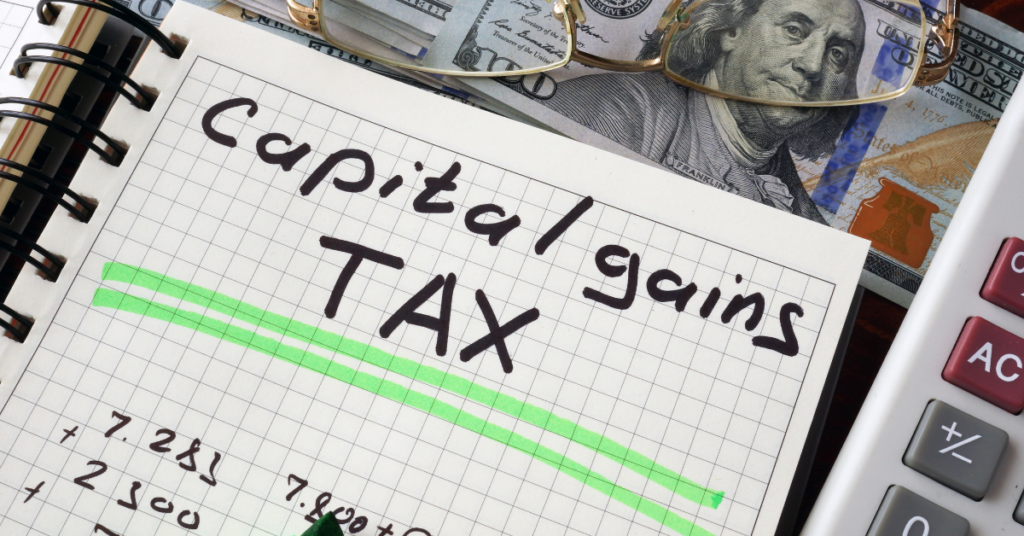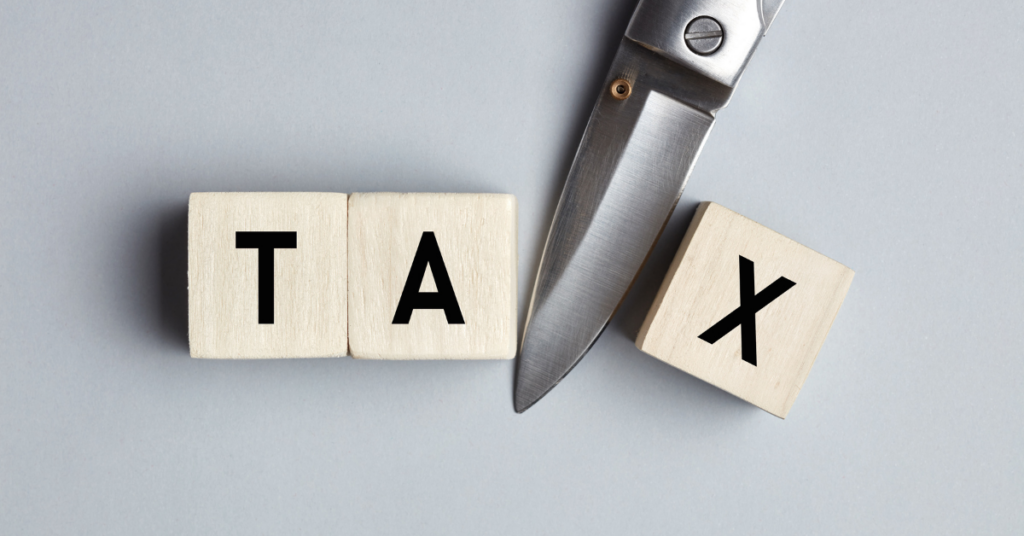Navigating the Australian Real Estate Market requires understanding key strategies such as tax cuts, negative gearing, and investment tips for 2024.
With the Australian Housing Market landscape in 2024 as the crucial focal point, we will delve into the implications of tax cuts and negative gearing to predict emerging market trends and effects that may impact decisions for property investors seeking success amidst capital gains tax changes in Australia.
Table of Contents
Considerations for Property Investors

Investment properties come with both risks and rewards, particularly when there are dynamic shifts such as the 2024 Australian tax reform in discussion. Maximising profit now requires effective navigation of these tax implications on the housing market, while carefully considering factors and strategies that will help to keep investments afloat.
Take a look at these factors below that will help to keep risks at a minimum with your investment decisions.
Capital Gains Tax (CGT) Changes in 2024
Capital Gains Tax (CGT) is levied on profits earned from selling assets like property. The CGT discount is set after calculating the difference between the purchase price and the sale price of the asset. Long-term investors currently benefit from a 50% CGT discount if they hold the property for at least 12 months, thus reducing the taxable portion of their profit.

However, the CGT discount rate will soon change as per the 2024 tax reform package. These potential changes in Capital Gains Tax (CGT) policy present significant implications for property investors, highlighting the importance of staying informed about alterations in capital gains tax on property regulations.
Property investors must carefully consider how these changes to the capital gains tax on investment property will impact their overall tax liabilities and investment strategies in 2024.
The alterations to CGT policies alongside the tax cuts entail key adjustments to CGT rates, thresholds, and exemptions. Understanding these modifications is crucial for property investors as they directly impact the taxation of profits generated from property sales in 2024.
For property investors contemplating selling their assets, lower CGT rates or increased thresholds may result in reduced tax liabilities, allowing investors to retain a larger portion of their profits.
Conversely, any tightening of Capital Gain Tax exemptions or higher rates could diminish returns from property sales, potentially influencing investment decisions and the timing of asset disposal due to the changes in proposed capital gains tax in 2024 for Australia.

Negative Gearing, Tax Cuts, and Strategic Adjustments in the Australian Property Market
Tax cuts can significantly impact the dynamics of negative gearing, a commonly employed investment strategy in the Australian property market. Traditionally, negative gearing involves borrowing to invest in property, anticipating that rental income won’t cover expenses, thereby leading to a tax deduction for the incurred loss.
However, with reduced tax liabilities resulting from tax cuts, the tax advantages associated with negative gearing, particularly about taxable income, may diminish. This shift may prompt investors to re-evaluate the feasibility of this strategy and explore alternative investment avenues within the broader tax system.

The implementation of tax cuts has the potential to reshape investor behaviour concerning the utilisation of tax benefits in property investments, specifically concerning their taxable income. This could manifest in:
- Prioritizing assets with robust potential for capital growth and rental yield, rather than relying solely on tax deductions from negative gearing.
- Diversifying portfolios by exploring investment opportunities that provide a more balanced overall return and align with the evolving tax system.
While negative gearing has historically been favoured for its tax benefits, the lowered tax rates stemming from tax cuts introduce potential challenges to its attractiveness. Investors must carefully assess the advantages of negative gearing in comparison to alternative investment options, considering factors such as risk, return potential, and overall tax efficiency within the broader tax system.
Strategies for Maximising Returns Amidst Tax Adjustments

Capital Gains Tax Discount
The current 50% discount on capital gains for assets held for more than 12 months remains in effect. Consider this as capital gains tax discount on investment property when calculating potential profits from selling an investment property.
Navigating CGT implications in the context of the new tax environment requires strategic planning. Investors may consider various strategies to optimise their CGT outcomes, such as timing asset sales to align with favourable tax thresholds or exploring tax-efficient investment structures like trusts or self-managed superannuation funds (SMSFs).

Additionally, utilising available CGT concessions or rollover provisions can help minimise tax obligations and maximise returns on property investments. A capital gains tax calculator is an essential tool in this process, providing precise calculations to help investors understand their potential tax liabilities. By using a capital gains tax calculator, investors can forecast different scenarios and make informed decisions about when to sell their properties.
Utilize a reliable capital gains tax calculator to accurately assess your potential tax liabilities when selling investment properties. Incorporating the use of a dependable capital gains tax calculator into your investment property approach enables proactive tax management and enhances overall decision making in investment property financing. This approach ensures that investors are well-prepared to handle the complexities of capital gains tax on investment property.

To further understand how does capital gains tax work, it’s important to consider various factors like the holding period and the capital gain tax rate applicable at the time of sale. For example, the capital gain tax in NSW on property can be significant, with investors needing to pay tax on 75% of their profits after the 2024 reform. Therefore, understanding how much is capital gains tax on property is crucial for effective financial planning.
Using a capital gains tax estimator or a dedicated capital gains tax calculator in Australia can provide valuable insights into potential tax obligations. The capital gains tax calculator ATO is particularly useful for Australian investors looking to navigate the complexities of the tax system. Whether dealing with capital gains tax on shares or property, these tools can offer precise calculations tailored to individual circumstances.

For those looking to minimize their tax burden, understanding capital gains tax on primary residence exemptions can be beneficial. The Australian capital gains tax rules also apply to other assets like shares, making it essential to use a capital gains tax on shares calculator. Knowing how to figure capital gains tax effectively can lead to more strategic investment decisions.
When it comes to capital gains tax on shares Australia, the rules differ slightly, but using a specialized capital gains tax shares calculator can help clarify potential liabilities. By leveraging these tools and staying informed about the latest tax regulations, investors can optimize their portfolios and enhance overall returns.
Negative Gearing – A strategy no more?
Investors will need to evaluate if negatively geared properties will still be a viable strategy.
Potential tax cuts on income could reduce the benefits of negative gearing. Currently, these losses can be offset against other income, lowering your overall tax bill. However, with tax cuts, the tax benefit of losses might be diminished. Additionally, changes in capital gains tax on investment property will also play a crucial role in shaping investment strategies.

With the capital gains tax on investment property increasing, investors need to reassess their portfolio to ensure profitability. The alterations in the capital gains tax on investment property could result in higher tax liabilities when selling properties. Thus, staying informed and strategically planning around the capital gains tax on investment property will be essential for maximizing returns in 2024.
Work with finance professionals to evaluate whether the potential tax savings from negative gearing will still outweigh the ongoing costs associated with the investment property. Consider factors like interest repayments, property maintenance, and vacancy periods.
Regional Variances and Property Market Trends

Tax cuts can have varying impacts across different regions within Australia, influencing property market
Tax cuts can have varying impacts across different regions within Australia, influencing property market dynamics in unique ways. The effect of tax cuts on regional economies and property markets will depend on factors such as local employment opportunities, population growth, and infrastructure development.
In regions experiencing robust economic growth and increased demand for housing, tax cuts may further stimulate property market activity, driving up prices and rental yields.
Conversely, in areas facing economic challenges or oversupply, the impact of tax cuts may be less pronounced, with property market dynamics shaped by broader economic factors.
Here’s how the CGT changes 2024 will affect housing affordability according to insights from the Grattan Institute.
- Potential Impact on Affordability: Negative gearing inflates property prices, particularly for high-income earners in high-demand areas. If tax cuts on income reduce the appeal of negative gearing, it could dampen investor demand and potentially improve affordability for first-time home buyers in these regions.
- Geographic Disparity: The impact of tax cuts on different regions might vary. However, negative gearing has a more significant influence on prices in capital cities compared to regional areas. So, any changes to negative gearing 2024 might have a more substantial effect on capital city markets.
Once details of the tax reforms are finalised, there will be an analysis of the potential impact on different regions. Analysis of historical data along with market indicators can be used to gain insights into how property markets are likely to be favoured.

Tips for Property Investors
Property investment involves handling tax intricacies, requiring careful planning and smart decisions. Here are simplified tips for property investors to enhance tax efficiency and adapt to changing policies:
- Tax Planning Strategies:
- Regularly review your investment structures.
- Consider tax planning to minimise liabilities and boost returns.
- Optimise deductions, utilise depreciation benefits and explore tax-efficient options like trusts or SMSFs
- Stay updated on available tax incentives for maximum benefit.
- Adjust Investment Strategies:
- Stay flexible and adapt to changing tax policies.
- Consider how tax changes impact cash flow, profitability, and overall investment goals.
- Stay informed about legislative updates and market trends to make agile decisions.
- Seek Professional Advice:
- Given tax law intricacies, consult qualified tax advisors or accountants.
- Professionals offer tailored guidance on tax planning, compliance, and opportunities for tax efficiency.
- Working with experienced advisors ensures confident navigation of complex tax scenarios while staying compliant with regulations.
Read more on Our Top 10 Picks For The Best Suburbs For Families And Kids In Australia.
Read more on The Best Real Estate In Illawarra To Invest In For Higher Rental Yields & Capital Growth.

Frequently Asked Questions (FAQs):
What are the key changes to Capital Gains Tax (CGT) in 2024 for the Australian property market?
The key change to Capital Gains Tax (CGT) for the Australian property market in 2024 is a reduction in the capital gains discount from 50% to 25%, applicable to assets held for more than 12 months.
This adjustment means investors will now pay capital gains tax on 75% of the profit, compared to the previous 50%. This significant shift in Australia capital gains tax policy will impact how investors strategize their property sales. Utilizing tools like a capital gains tax calculator for NSW can help investors accurately assess their potential tax liabilities under the new rules.
According to the ATO capital gains tax guidelines, staying updated on these changes is crucial for effective tax planning. Understanding the intricacies of capital gains tax calculation will be essential for maximizing returns and minimizing tax obligations. Additionally, knowing the various capital gains tax exemptions available can further help in reducing the overall tax burden on property investments.
Notably, this change applies only to assets acquired after a specific date determined by the government. Investments made before this date will still benefit from the 50% discount.
How will the CGT changes impact property investors in 2024?
New CGT rules in Australia mean investors need to adapt. Focus on long-term holdings (over 12 months) to benefit from the remaining discount. Prioritize properties with high capital growth potential to offset the increased tax burden. Consider consulting a tax professional for strategies like SMSFs or optimizing your portfolio for the new tax landscape.
What strategies can property investors use to navigate the new CGT landscape in 2024?
Investors can employ several strategies, including utilizing available concessions such as the 50% CGT discount for assets held over 12 months, considering tax-efficient investment structures like trusts or self-managed SMSFs, and staying informed about legislative updates and market trends.
Seeking professional advice from qualified tax advisors or accountants can also help navigate the changes effectively.
Will the 2024 tax cuts and Capital Gains Tax (CGT) changes affect negative gearing benefits?
While negative gearing itself wasn’t directly changed, the 2024 tax cuts will affect it. The reduced CGT discount from 50% to 25% means less tax benefit from future property sales.
This might make negative gearing seem less attractive for some Australian property investors.
Can the 2024 CGT changes influence the timing of buying or selling property?
Yes, the 2024 CGT proposed changes can influence the timing of property transactions. Short-term investors may not be affected, but those aiming to hold for the full CGT discount (pre-2024 purchases) might delay buying. Sellers with pre-2024 assets may look to offload before the discount shrinks.
How much is capital gains tax?
To know how much is capital gains tax, understanding the nuances of capital gains tax rate in Australia is crucial. Capital Gains Tax (CGT) in Australia is applied at your marginal tax rate, which depends on your total taxable income. As of the 2024 reforms, for assets held more than 12 months, you pay tax on 75% of the capital gain due to the reduced discount from 50% to 25%. To determine the exact amount, using a capital gains tax calculator or consulting the ATO guidelines is recommended.
What is capital gains tax?
Capital gains tax (CGT) is a tax on the profit made from selling certain types of assets like property or shares, applicable when the sale price exceeds the original purchase price.
How to calculate capital gains tax in Australia?
If you are thinking how is capital gains tax calculated or how to calculate capital gains tax, then subtract the original purchase cost and associated expenses from the sale price of the asset. The remaining profit is added to your taxable income and taxed at your marginal rate.
What are capital gains?
Capital gains represent the profit earned from selling a capital asset, such as real estate or stocks, when the sale price exceeds the purchase price.
How to work out capital gains tax?
Calculating capital gains tax (CGT) involves subtracting the original purchase cost and associated expenses from the sale price of the asset. The resulting profit is then added to your taxable income and taxed at your marginal rate.
How to figure capital gains tax?
To figure capital gains tax, calculate the profit by subtracting the purchase price and associated costs from the sale price of the asset. Capital gains and taxes depend on how long you’ve held the asset; generally, capital gains are taxed at your marginal tax rate. Notably, there are specific exemptions and rules for capital gains tax on a primary residence.
What is Negative Gearing?
Negative gearing is an investment strategy where you borrow money to buy a property and the rental income is less than the expenses, such as loan interest and maintenance costs. This loss can be offset against other income, reducing your overall tax bill and making negative gearing a popular choice for property investors in Australia.
How much capital gains tax will I pay?
The amount of capital gains tax you will pay depends on your marginal tax rate and how long you have held the property. If you have owned the property for more than 12 months, you are eligible for a CGT discount, which, as of the 2024 tax reform, means you’ll pay tax on 75% of your capital gain. Using a capital gains tax calculator can help you accurately estimate your tax liability.
How much is capital gains tax in Australia?
Capital gains tax in Australia is taxed at your marginal tax rate, which varies based on your total taxable income. After the 2024 reform, long-term investments will see a reduced CGT discount, requiring you to pay tax on 75% of the profit. The exact amount can be determined using tools like the ATO capital gains tax calculator.
How to avoid capital gains tax on shares in Australia?
To minimize or avoid capital gains tax on shares, you can consider strategies such as holding shares within a self-managed superannuation fund (SMSF), which may offer tax concessions. Another approach is to utilize any available capital losses to offset your capital gains. Always consult with a tax advisor to explore all available options and ensure compliance with tax laws.
How do you calculate capital gains tax?
To calculate capital gains tax, subtract the original purchase cost and any associated expenses from the sale price of the asset to determine your capital gain. Apply any eligible discounts, such as the 50% discount for assets held longer than 12 months (changing to 25% in 2024). Finally, multiply the remaining gain by your marginal tax rate to determine your CGT liability.
How much capital gains tax?
The amount of capital gains tax you owe depends on your marginal tax rate and how long you’ve held the asset. For assets held more than 12 months, the taxable portion of the gain is currently discounted by 50%, but this will change to 25% in 2024. It’s essential to use a capital gains tax calculator to get an accurate estimate based on your specific situation.
How to avoid capital gains tax Australia?
One way to minimize capital gains tax in Australia is to take advantage of exemptions, such as the main residence exemption, which applies to your primary home. You can also defer tax through rollovers or by timing the sale of assets to align with periods of lower income. Consulting a tax professional can help you explore these and other strategies to legally reduce your CGT liability.
How to calculate the capital gain tax?
Calculating capital gains tax involves determining your capital gain by subtracting the purchase cost and associated expenses from the sale price of the asset. Apply any applicable discounts, such as the 25% discount for assets held over 12 months after 2024. Use a capital gains tax calculator to factor in your marginal tax rate and accurately compute your tax obligation.
How to figure capital gains tax?
To figure out your capital gains tax, start by calculating the difference between your asset’s purchase price and its sale price. Apply any eligible discounts, like the new 25% discount for long-term holdings post-2024, and then multiply the taxable gain by your marginal tax rate. Utilizing tools such as the ATO capital gains tax calculator can simplify this process and provide precise estimates.




